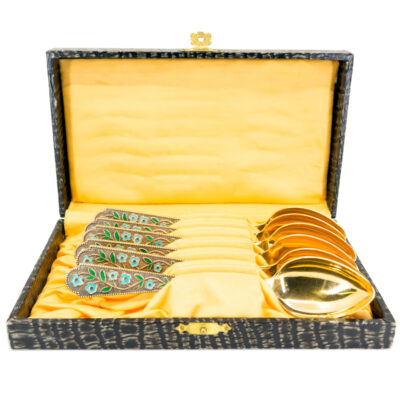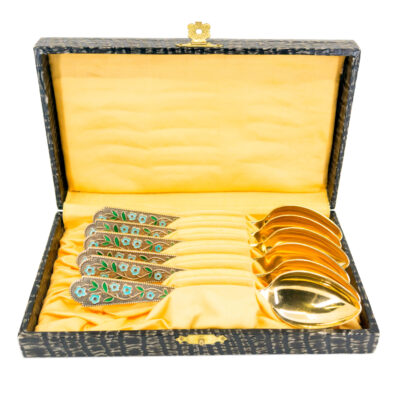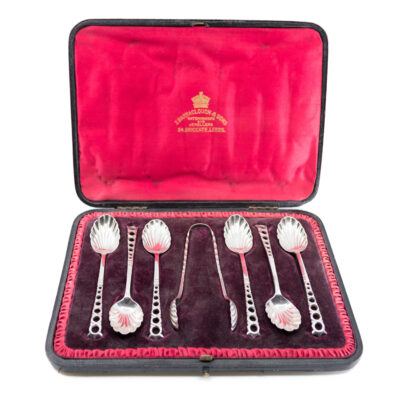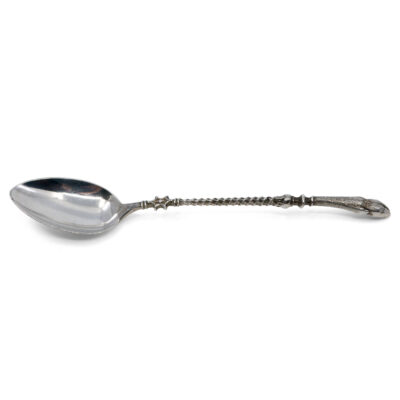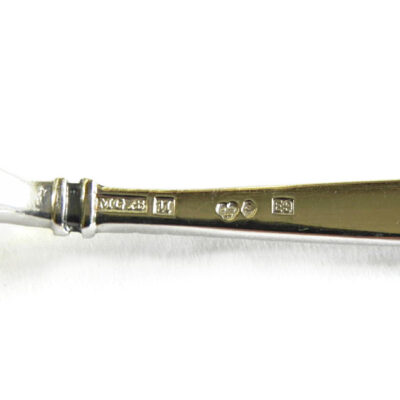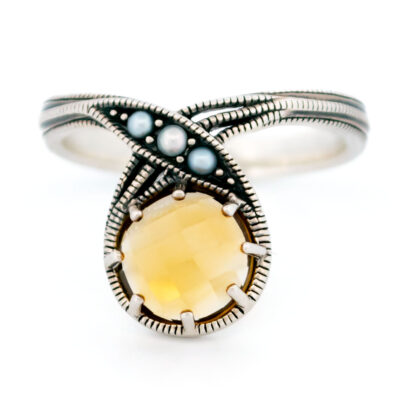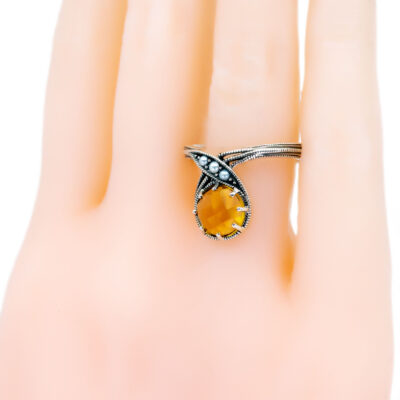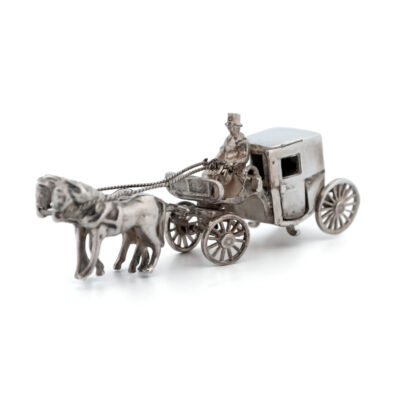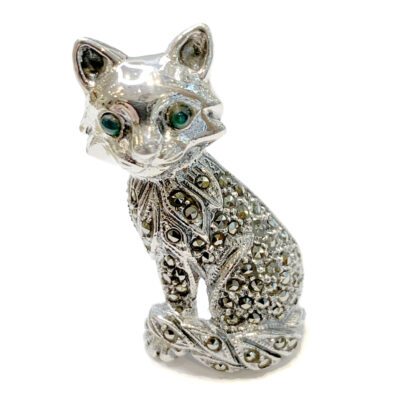This fine quality 833 silver ice cream spoon set was crafted by H.M Mansvelt in the Netherlands in 1905. Beautifully crafted in silver, this set provides a luxurious touch to any ice cream indulgence. Perfect for serving desserts made with care and attention.
Videos
Details: Silver Spoon Set.
Dimensions: serving: L 23 x W 7.5 cm spoons: L 11 x W 3 cm.
Weight in grams: 198.
Condition: Very good condition – slightly used with small signs of wear.
Shipping and Pickup: This fine quality piece ships from our store located in the center of Amsterdam, The Netherlands. We offer both registered shipping and local pickup at our store. In the case of local pickup, any applicable shipping costs will be refunded.
About Us: Add some sparkle to your style with Binenbaum.com. We offer a stunning selection of antique and vintage jewelry that you won’t find anywhere else. From timeless rings and dazzling necklaces to unique brooches, we have something for every taste and occasion. Visit our website today and treat yourself to a piece of history.
| Design Era | |
|---|---|
| Design & Historical Context | The Edwardian period, which began in 1901 with the death of Queen Victoria and the ascension of her son King Edward, was a time of opulence and extravagance. This was reflected in the jewelry of the time, which often featured expensive gems such as diamonds, emeralds, and rubies in intricate and ornate designs. The jewelry of the Edwardian period was characterized by its delicate and feminine aesthetic, with a focus on intricate details and intricate metalwork. Many of the pieces from this period were inspired by the Art Nouveau movement, which favored natural and organic forms, as well as the Rococo style, which was characterized by elaborate and ornate decorative elements. Overall, the Edwardian period was a time of great creativity and innovation in the world of jewelry, and many of the pieces produced during this time are still highly prized and collected today. |
| Materials & Craftsmanship | Silver: The Metal of Elegance and Versatility Silver, known for its bright, reflective luster, is one of the most beloved and widely used precious metals in the world. This versatile metal has been cherished for thousands of years, not only for its beauty but also for its malleability, making it ideal for crafting intricate and delicate jewelry designs. Historically, silver has been associated with the moon and considered a symbol of purity, clarity, and protection. Ancient civilizations, from the Egyptians to the Greeks and Romans, valued silver for its beauty and used it to create coins, jewelry, and religious artifacts. In many cultures, silver is also believed to have healing properties, often used in amulets and talismans to ward off negative energy. In modern jewelry, silver is prized for its affordability, versatility, and timeless appeal. Sterling silver, an alloy of 92.5% pure silver and 7.5% other metals (usually copper), is the standard used in high-quality jewelry. Its durability and bright, reflective surface make it an excellent choice for a wide range of designs, from minimalist pieces to ornate creations. Silver can be polished to a high shine or given a matte, oxidized, or antiqued finish to suit various styles. Silver is more than just a metal; it is a symbol of elegance, flexibility, and understated luxury. Its enduring popularity and wide-ranging applications make it a staple in jewelry that can complement any look, from casual to formal, with timeless grace. |
| Dimensions | serving: L 23 x W 7.5 cm spoons: L 11 x W 3 cm |
| Weight (in grams) | 198 |
| Condition | Very good condition – slightly used with small signs of wear |
By following these tips, you can enjoy your precious jewelry for many years to come.
Related Products
-
Enamel Silver Cloissoné Spoon Set 11790-2853
€ 895,00 VAT incl. (where applicable) -
Silver Demitasse Spoon Set 8822-2634
€ 695,00 VAT incl. (where applicable) -
Silver Scalloped Spoon Set 1421-1898
€ 850,00 VAT incl. (where applicable) -
Silver Antique Spoon Set 7913-2892
€ 450,00 VAT incl. (where applicable) -
Silver Markströms Guldsmeds Spoon Set 7879-2498
€ 695,00 VAT incl. (where applicable) -
Citrine Pearl Silver Crossover Ring 17354-1550
€ 175,00 VAT incl. (where applicable) -
Silver Horse Drawn Carriage Miniature 10983-2814
€ 250,00 VAT incl. (where applicable) -
Agate Marcasite (Pyrite) Silver Cat Brooch 14273-1572
€ 165,00 VAT incl. (where applicable)
- Home
- Collection
- Fine Jewelry
- Silver Jewelry
- Silverware
- Boxes
- Candlesticks
- Salt and pepper shakers
- Miniatures
- Salt cellars
- Spoon Set
- Condiments
- Frames
- Napkin Ring
- Spoon
- Oddities
- Cups
- Vases
- Cutlery
- Serving Spoon And Cake Server
- Candlesticks
- Baskets
- Hanukkiah
- Spice Tower
- Yad
- Tea Set
- Sugar Castor
- Napkin Rings
- Wine Bottle Coaster
- Wine Stopper
- Tea Pot
- Jugs
- Rattles
- Hip Flask
- Miscellaneous
- Rings 💍
- About
- Contact




